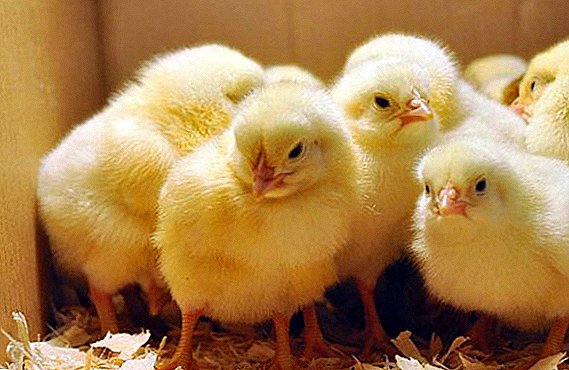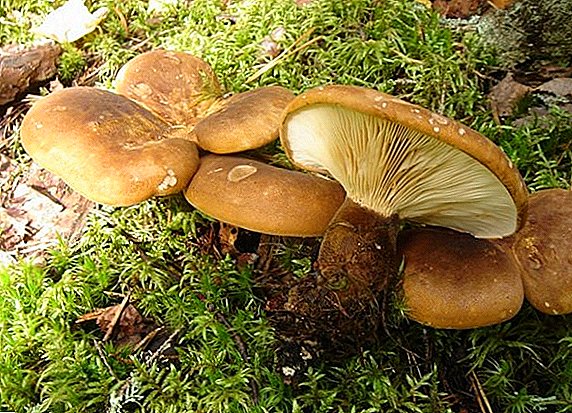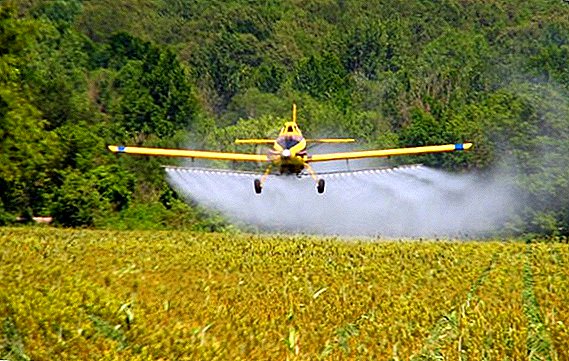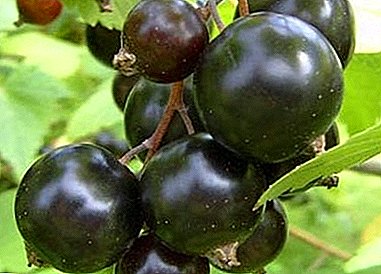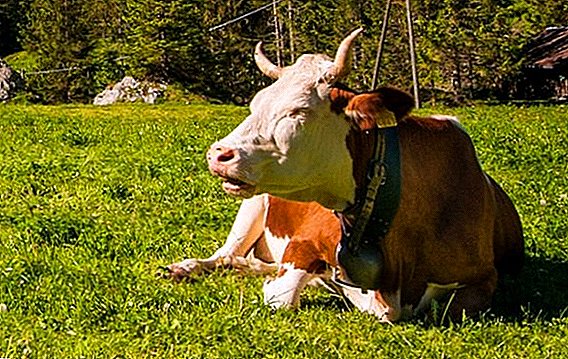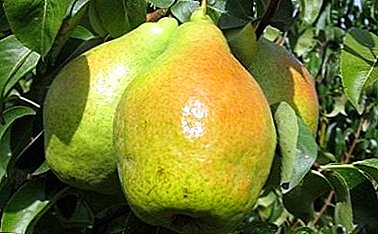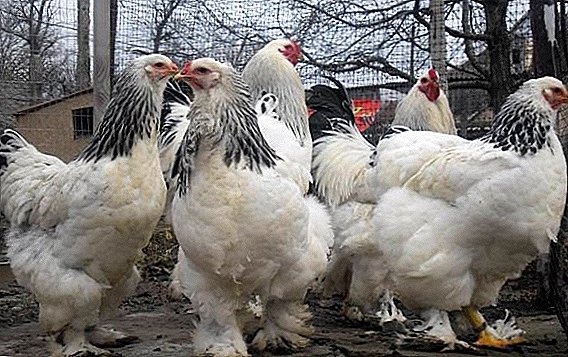 Formerly, Brahma chickens were highly valued by domestic poultry farmers because of their excellent meat characteristics. They are distinguished by the most delicious, tender, dietary meat. Their beautiful appearance is a kind of bonus, bringing aesthetic pleasure to the owners. However, over time, it is the decorative characteristics of birds of this breed that came out on top, therefore today Braman's hens are bred more often as ornamental and meat ones. Before you decide on the breeding of this breed of birds should be familiar with their features.
Formerly, Brahma chickens were highly valued by domestic poultry farmers because of their excellent meat characteristics. They are distinguished by the most delicious, tender, dietary meat. Their beautiful appearance is a kind of bonus, bringing aesthetic pleasure to the owners. However, over time, it is the decorative characteristics of birds of this breed that came out on top, therefore today Braman's hens are bred more often as ornamental and meat ones. Before you decide on the breeding of this breed of birds should be familiar with their features.
Breed history
Chickens Brahma were removed for a long time and were officially registered in 1874 in North America. They came from the crossing of two breeds - Malay and Kokhinhinsky. The first one was distinguished by its beautiful plumage and fighting character, the second - by the excellent quality of meat. As a result, breeders managed to bring a beautiful meat breed.
Residents of Russia first met the hens of Brama in the XIX century. They have long been valued as meat individuals. In the twentieth century, the breed was among the five most common domestic birds. At that time, roosters could reach a weight of 7 kg.
If you grow chickens for meat, pay attention to the Jersey Giant, Plymouthrock, Orpington, Fireol, Cornish, Hungarian giant breeds.

A large weight even gave them a number of inconveniences, since it was difficult for the birds to hold onto thin legs. Today, they are increasingly bred because of the decorative characteristics. As a result of mixing with other breeds, they have lost value for poultry farms (as a meat species).
Did you know? Domestic chickens are descended from wild Bankings living in Asia. The latest data from scientists prove that the domestication of birds occurred about 6-8 thousand years ago in the territory of Southeast Asia and China.
Characteristic features
External characteristics of Brahma chickens make it easy to distinguish them from other poultry. They are characterized by:
- beautiful posture;
- large fleshy body;
- wide chest and belly;
- small scallop in cocks in the form of a pod without clearly distinguishable teeth;
- red-orange eyes;
- fully feathered legs;
- yellow skin;
- strong short beak of yellow color;
- red earrings and earlobes;
- colorful plumage;
- hens reach a weight of 3.5-4 kg, roosters 4.5-5 kg.

Egg production
With a body weight of 3 kg chicken can bring 100-120 eggs per year. The average weight of each egg is 50-65 g.
The egg-laying chickens of Brahma begin at 9 months of age. Decrease in productivity during the winter period is insignificant. A reduction in egg production occurs when the hen reaches the age of two.
Important! When breeding poultry for the purpose of obtaining eggs, one should be aware that the level of egg production is influenced by such factors as the age of the individual, the conditions of housing, the quality of food, and the season.
Nature of chickens
The temperament of birds has the following features:
- calm temper;
- phlegm;
- gullibility;
- addictive to man.

Breed species
Today, 4 types of hen Brama are bred, which differ in the color of their plumage:
- partridge;
- pale yellow;
- light coloured;
- dark.
Kuropatchataya
The main plumage of the parturd subspecies of light fawn color with a triple outline of feathers in black and gray. Roosters have a red with orange color of the head and back, belly and legs are black with a green tint.

Partridge laying hens lay eggs with a light brown shell in dark brown specks.
Learn how to increase egg production in the winter, why chickens carry small eggs, what vitamins chickens need for laying hens, how to check the freshness of eggs, why chickens peck eggs.
Fawn (buff)
The main color of the plumage is light brown with a golden hue. Male representatives have a darker mane. Both sexes have a dark collar. The feathers on the neck are black. In black painted and the end of the tail. The eyes have a red-brown iris.

Chickens are born yellow or dark.
Familiarize yourself with the rules of incubating chicken eggs, feeding chickens in the first days of their lives, raising their young, preventing disease and treating chickens.
Light
A species with light plumage is also called Colombian. Its plumage is mainly colored silvery-white. Fly wings and tail ending are black.

There is also a black stripe in the form of a collar around the neck. Roosters have black stripes on the lumbar feathers, in chickens there are no such stripes. Plumage is very lush.
Did you know? Images of chickens were found in the tomb of Tutankhamen, allegedly built in 1350 BC. er In Egypt, archaeologists managed to unearth the remains of chickens, which are dated to 685-525 years BC. er
Dark
For dark layers of the Brahma breed is characterized by a complex pattern of plumage. Dark stripes around the ends of the feathers, which gives the body of birds a very interesting color. The head is silver white. The feathers on the neck are black with white edging.

Roosters have a simpler color. The head is painted silver-white with black splashes. Other parts of the body are black with green tint.
For decorative purposes, chickens of Araukan, Ayam Tsemani, Hamburg, Chinese Silk, Sibrayt, Aurora Blue, Gudan are bred.
Tips for feeding chickens
To achieve a beautiful plumage of chickens, their healthy appearance and tasty, not hard meat, it is important to choose a balanced diet. Here are some tips on how to feed the Brahma birds correctly:
- When keeping poultry it is recommended to organize three meals a day. Birds should be fed at the same time every day.
- It is recommended to adhere to the following feeding pattern: morning - grain food, lunch - wet mash with the addition of water or broth, greens, evening - grain food.
- The diet should contain the following components: grain, bran, vegetables, fish meal, chalk, salt. The basis of the menu should be cereals.
- An approximate daily ration may look as follows: grain - 50-55 g, wet mash - 30 g, boiled potatoes - 100 g, hay flour - 10 g, chalk - 3 g, bone meal - 2 g, salt - 0.5 g In winter, the amount of feed needs to be slightly increased (based on the needs of the bird).
- In the chicken coop and on the walk, you should put a separate vessel in which to put river sand or small gravel. These elements are necessary for the good functioning of the digestive tract of birds.
- The daily rate of feed should contain 15 g of protein, 4 g of fat and 50 g of carbohydrates.
- It is important to change the menu periodically so that the feed is not boring.
- Constant access for birds should be a drinking bowl with fresh water at room temperature.
- To stimulate chickens to motor activity, you need to pour 10% of the daily feed on the floor.
- Mineral supplements with calcium in the composition should be placed in a separate trough.

Important! The farmer must strictly adhere to the recommendations on the volume of feed for chickens. A bird that is regularly undernourished or overfed will be more likely to get sick. For the breed of Brahma is characterized by such a disease as obesity, so you should be especially careful.
Maintenance and care
To successfully contain Brahma chickens will not require any special conditions. They have enough equipped chicken coop and a place for walking. Basic requirements for maintenance and care:
- Fluff plumage and shaggy legs allow birds to easily survive low temperatures and live in an unheated hen house.
- In a chicken coop, birds should be kept at the rate of 2-3 individuals per 1 square meter. m square. Overcrowding threatens with frequent infections.
- In a room where birds live, cleanliness and dryness should be maintained, and regular litter changing and disinfection should be carried out, including feeders and drinkers.
- The coop must be equipped with a good ventilation system. If this is not possible, then the room should have at least one window.
- The recommended day length is 14 hours. In winter, the room should be put extra light.
- In the coop should be present such mandatory elements: feeders, drinkers, nests, bedding, perches. It is worth noting that, due to the large weight, the Brahms chickens have a hard time climbing the perches, so for them you need to lay a high-quality bedding in a thick layer.
- In the open-air cage for each individual should be 1 square. m square.
- In the aviary must be trough and drinkers. A canopy is desirable.

Important! Despite the fact that the broods of Brahma are distinguished by a good maternal instinct, young animals are recommended to be hatched by incubation, since there are cases when large birds crush their eggs.
Advantages and disadvantages
This breed has both its strengths and minor drawbacks.
Benefits:
- beautiful exterior;
- possibility of breeding in regions with a cold climate;
- good quality dietary meat with excellent taste;
- unpretentious care;
- well-developed maternal instinct;
- calm temper.
- late maturation;
- frequent diseases in young individuals.
Breed of chickens Brahma: video
Hens of Brahma breed: reviews
There are poultry farmers who deal with the bird seriously and keep only large chickens, as if supporting the meat trend in this breed, but very few of them. As a rule, the modern Brahma is 3-4 kg of roosters and chickens a little less. Once upon a time, Brahma was taken from an amateur by this breed, and he brought a bird from abroad, roosters of 6 kg each. 4.5 kg each.






